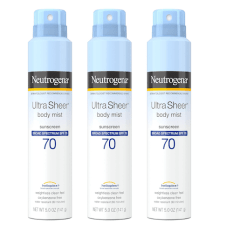Doctors Say These Kitchen Staples Speed Healing of a Painful Skin Ulcer
Plus discover the soothing natural oil that one MD says is his "go-to" for almost everything
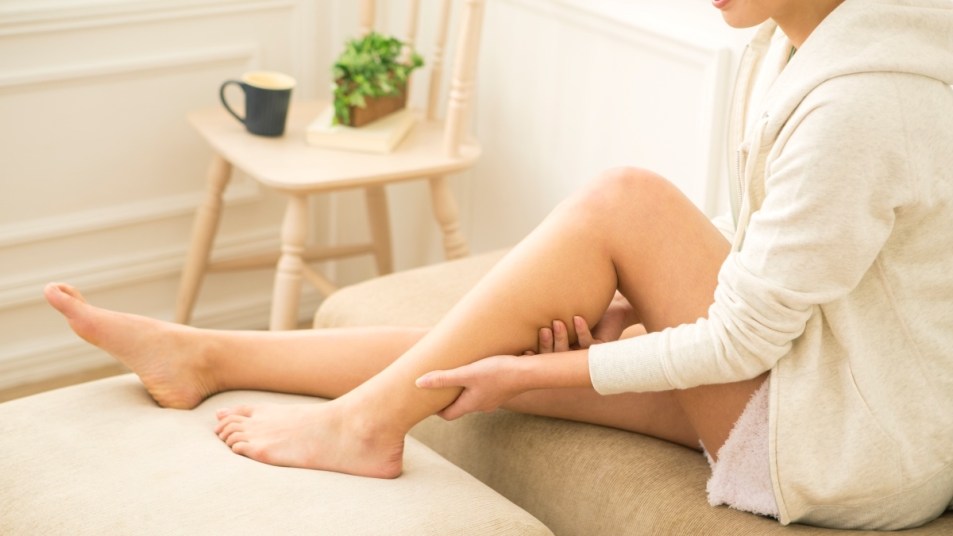
It starts as a small patch of dry skin on your leg. But the area soon becomes itchy, the skin begins to crack and it’s nearly impossible not to scratch. A couple days go by and the wound isn’t healing – it might even be worsening. That’s when you realize you’re dealing with a skin ulcer.
Although skin ulcers can signal an underlying health issue and require careful attention, there are ways to ease discomfort and encourage healing. Here, doctors explain what causes a skin ulcer and how to treat it.
What is a skin ulcer?
A skin ulcer is a round, open sore appearing where the skin has broken down. Healing is slow, often due to poor circulation, says Naz Wahab, MD, a Las Vegas-based wound care specialist.
Initially, the affected skin may discolor, appearing red and warm on lighter skin or shiny and blue on darker skin. As the condition progresses, symptoms can include tingling, itching, scabbing and swelling near the ulcer, as well as dry or flaky skin around it. The wound can be tender and might emit an unpleasant odor with yellow or green pus, signaling an infection. A skin ulcer can develop anywhere on the body, but they’re commonly found on the lower legs, notes Dr. Wahab.
“The lower legs are the furthest from the heart, and also they’re going against gravity,” explains Dr. Wahab, noting that it’s harder for nutrients and oxygen to reach the area and for waste to be efficiently removed — crucial processes for healing. Most ulcers heal after 3 or 4 months of treatment. However, some can take longer and some may never clear up, Dr. Wahab says.
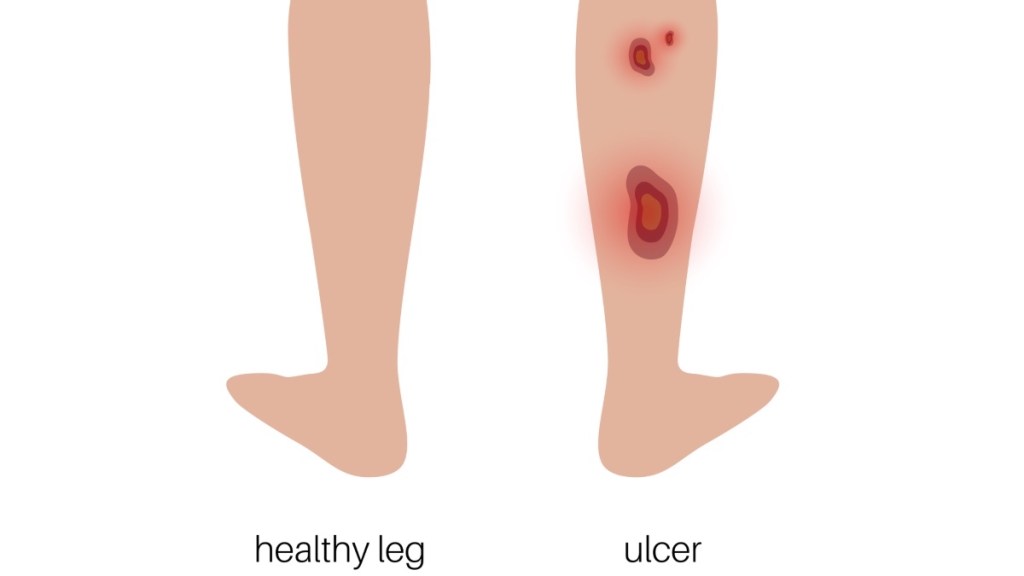
Related: Pain and Itch ‘Down There’ Can Signal a Vaginal Ulcer — See the Remedies Ob/Gyns Recommend
Common causes of a skin ulcer
Between 3% and 5% of US adults over 65 develop non-healing skin sores. Sometimes, a skin ulcer can simply form as a result of a minor incident. “Very often I get patients who say they hit their leg on the edge of the dishwasher and it didn’t heal,” Dr. Wahab says.
The ulcers stem from two types of circulation problems: arterial, where the arteries don’t deliver enough nutrients and oxygen, and venous, where the veins fail to effectively return blood and waste products to the heart. Venous ulcers are more common, and they usually appear on the inner part of the leg just above the ankle.
Other causes of a skin ulcer include:
1. Menopause
Women are more commonly affected by skin ulcers than men, particularly due to hormonal changes during pregnancy and menopause. “As our estrogen is declining, so does skin integrity,” Dr. Wahab says. Estrogen keeps skin elastic and hydrated. But when levels dip, the skin becomes thinner, loses its elasticity and is more prone to damage.
Aging also compromises blood transportation to the heart because the structure in the veins deteriorates, says Dr. Wahab. And over time, our bodies to produce less collagen, a protein that gives skin its structure and elasticity, adds Dr. Wahab.
2. Smoking
Smoking is another cause of skin ulcers. It impairs blood circulation and depletes the skin of essential oxygen and nutrients, says Robert A. Norman, DO, a Tampa-based dermatologist. Nicotine narrows blood vessels, while carbon monoxide in smoke limits the amount of oxygen that reaches tissues. This makes it harder for the body to heal wounds.

3. A more sedentary lifestyle
A lack of physical activity can reduce blood flow and contribute to ulcers, too. And in a vicious circle, ulcers can cause considerable pain and further reduce mobility. “It’s a Catch-22,” says Dr. Norman, author of Integrative Dermatology. “[My patients] have other health problems so they don’t move around as much. And then that makes them much more prone to ulcers.”
Related: MDs Reveal the Top 2 Stomach Ulcer Causes (Stress Isn’t One of Them) + How to Block a Flare-Up
4. Vascular health conditions
Certain chronic conditions that impair blood flow and skin integrity can up the odds of an ulcer. Chief among them is high blood pressure, particularly when combined with circulation-hampering peripheral artery disease or atherosclerosis. “When you have good blood flow, circulation is going right to the site of inflammation and infection,” says Dr. Norman. “But when it’s decreased, the reaction and healing time slows down.”
5. Diabetes
Over time, high blood sugar can cause nerve damage in the feet and legs known as peripheral neuropathy. This often results in a loss of pain sensation, which can allow skin ulcers to fester unnoticed. “That’s why we need to be very comprehensive and especially examine the bottom of the bottom of the feet,” says Dr. Norman.
How to speed healing of a skin ulcer
The primary treatment for skin ulcers involves improving blood flow to the affected area. Keeping the wound clean, dry and properly bandaged is key, says Dr. Wahab. In the meantime, these home remedies can help encourage healing.
1. Wash the wound
“Dilution, dilution, dilution — just rinsing it under water is so important,” Dr. Wahab stresses. “It’s what our grandmothers probably told us.” She suggests using soap and water or a saline solution, a sterile mixture of distilled water and salt. “Saline helps to create an environment where bacteria don’t like to live.”
2. Elevate your leg
Elevating your legs isn’t just about relaxation, it’s part of the treatment, says Dr. Wahab. She says resting with the limb lifted above heart-level helps the blood flow back to the heart, counteracting the effects of gravity. Dr. Wahab suggests propping the leg up with cushions or pillows for at least 20 minutes a day.

3. Wear compression socks
Compression wear improves circulation and reduces swelling. In fact, it’s widely considered the gold standard for the management of venous leg ulcers. Dr. Norman is a big fan of the Unna Boot, which is applied in a physician’s office. This compression bandage is made from zinc oxide-impregnated gauze that extends from the toes to the knee, allowing for movement at the ankle joint so you can stay active. It should be replaced every three to seven days, depending on drainage levels.
4. Down more H2O
Staying well hydrated is both simple and also incredibly difficult, acknowledges Dr. Wahab. “We lose fluids just by living, and it is especially hard to stay hydrated in hot dry climates like Las Vegas, where I live,” she says.
Dr. Wahab recommends aiming for at least 8 to 10 glasses of water each day, and adding electrolytes or a pinch of Himalayan salt to water to boost hydration. Not a fan of plain water? Nosh on more water water-based foods like cucumber, tomatoes, watercress, apples, lettuce, watermelon and peaches.
“These foods do more than just quench your thirst,” Dr. Wahab explains. “They ensure that hydration reaches deeper into your blood vessels, not just your tissues, helping to improve circulation to the skin.”
5. Apply aloe vera
Known for its soothing properties, aloe vera is particularly beneficial for stasis dermatitis, a condition linked to poor circulation that can cause ulcers on the legs. If available, go directly for the actual plant and slice a leaf open. “Squeeze the leaf and apply the gel directly to the skin,” Dr. Wahab says. “It’s the most potent that way.”
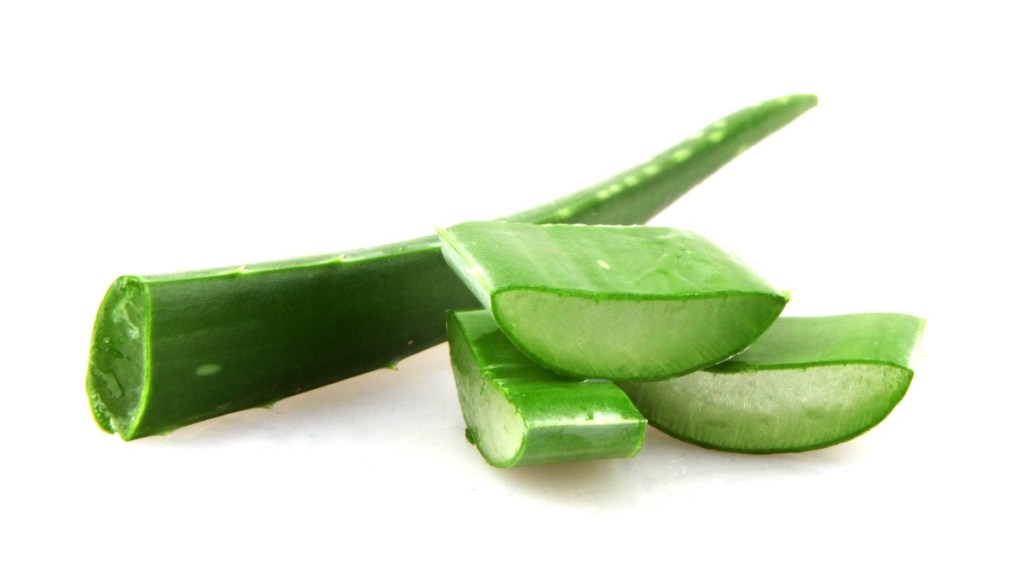
6. Dab on honey
Natural antimicrobial properties make high-grade honey effective in fighting infection, says Dr. Norman. “I’m using it more and more, especially medicated honey,” he says.
Just note that not all honeys are equal, Dr. Wahab cautions. The squirt bottle shaped like a bear? Not so much. “It should be fresh and unprocessed and used on gauze for wound care,” Dr. Wahab explains. One to try: Honey Gauze Dressing.
7. Try turmeric
The vibrantly-hued spice contains a compound called curcumin that’s responsible for its anti-inflammatory and antioxidant properties. When taken as a supplement, it can help speed up healing, says Dr. Norman. He recommends 500 mg of high-quality turmeric twice a day. One to try: NatureWise Curcumin Turmeric
8. Apply tea tree oil
Tea tree oil is a powerful tool in treating a variety of skin issues. “It’s my go-to for most everything for its anti-inflammatory and antibacterial properties,” Dr. Norman says. He suggests adding 1 drop of tea tree oil to a wound ointment cream and applying it daily. (Discover how tea tree oil can ease eczema, too.)
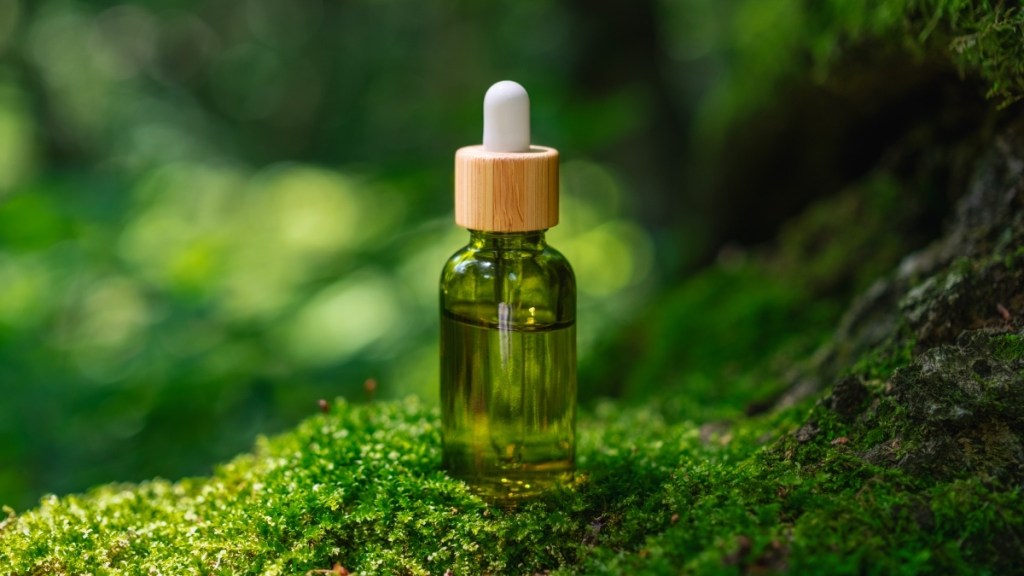
When to see a doctor for a skin ulcer
Contact a medical specialist if you have a skin ulcer that won’t heal after a week or so of home care, or if there are signs of infection like increased redness, swelling, pus, pain or fever. “Wounds that don’t heal in three to four weeks are much more likely to be non-healing for months, even years later,” says Dr. Wahab. Getting proper treatment within this window is crucial for recovery.
For more ways to heal painful skin bothers:
Pain and Itch ‘Down There’ Can Signal a Vaginal Ulcer — See the Remedies Ob/Gyns Recommend
Say Goodbye to Redness, Bumps & Irritation — Dermatologists Reveal How to Get Rid of Rosacea
Stress Hives Can Be Itchy and Embarrassing — Here’s How to Speed Relief and Block Flare-Ups
This content is not a substitute for professional medical advice or diagnosis. Always consult your physician before pursuing any treatment plan.

